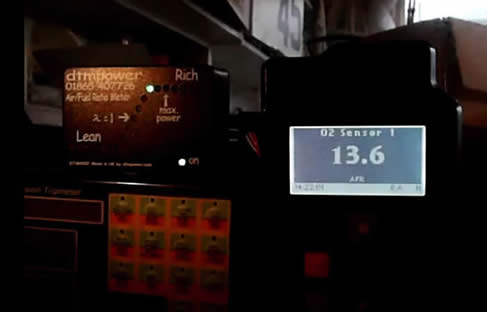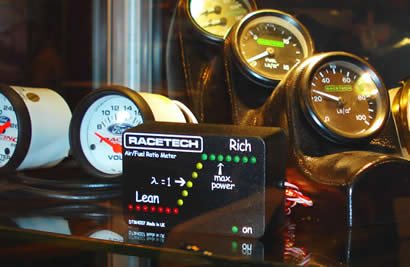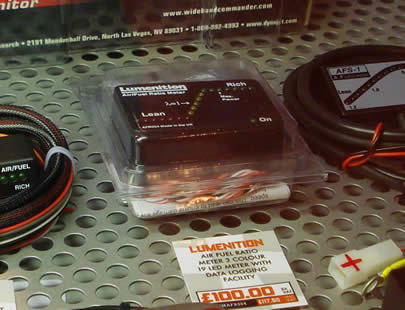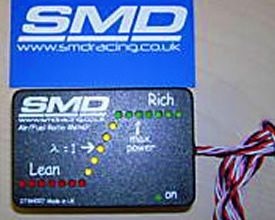Wideband versus narrow band sensors and displays
Recently one of our clients did a back to back test between the DTMPower DTM4007 unit which we manufacture and an Innovate wide band unit.
He was kind enough to make a quick video of this test and send us a copy, which makes interesting viewing.
During the video the engine speed is varied a bit, but also the fuel mapping is swung from rich to lean on the mapping computer
which you don’t see. But you can see the effect of the fuelling swings...
YouTube Video 1
YouTube Video 2
The video shows that the DTM4007 unit measures lean mixtures down to 16:1 afr and up to 12:1 and richer. The Innovate unit would of course
measure mixtures leaner than that and richer than that (from 22.39 afr to 7.35 afr and some models to two decimal places!),
but why would you ever need to, the engine won’t run at either of those extremes. It certainly won’t make any worthwhile
torque or in fact pull at all, and if on over-run, then zero fuel is probably what you are looking for.
The most interesting comparison we saw was the comparative response speed of the DTM4007’s LED display and the digital
display of the Innovate. The DTM4007 display was far faster, so spotting those tricky transient mixture changes is much easier
with the DTM4007 unit. Add to that the fact that with the Innovate unit the brain has to compute what the numbers mean when
displayed as numbers as opposed to the clear and simple “more and less” analogue nature of the DTM4007 unit,
really brought it home.
Some other interesting facts are that when you have one sensor reading say 4 primary exhaust pipes at the convergence point in the
collector if one or more cylinders is running differently to the rest the DTM4007 will display what appears to the human eye as
two lights on at the same time. This is in fact displaying the lambda value of two differing exhaust gas samples in fast succession
such is the reaction speed of the sensor and the display together. We have not yet found what the Innovate unit will do in this
circumstance, but I bet it won’t display two digital values of AFR at the same time. In reality the actual value of the
two peaks is of limited interest as you would spot a problem and sort it out before continuing. Which cylinder is it? Easy...
just cut the fuel to each in turn by pulling the injector connector off and see which injector is creating the off correct reading...
We particularly like the claims to be “The LM-2 is driven by the award winning, industry's most accurate, fastest-responding,
and only "fully-digital" wideband controller available on the market.” Not – we think –
the fastest responding air fuel ratio meter... Why does it need to be fully digital? In fact it isn’t, as the sensors
are all fully analogue so it will need an AD (analogue to digital) converter somewhere in there, and we have just shown that
a digital display is not the easiest thing to read quickly... we haven’t won any awards, well not yet anyway!
Why don’t you need to calibrate the DTM4007 unit, (which you will have to do a lot of with an Innovate wideband system)?
The reason is very simple, we did it for you in manufacture of the display, and the tolerance of most good quality (we only advise using
Bosch sensors) narrowband sensors is good enough for any use outside of laboratory conditions. In fact we have re-mapped many road car
standard engines using this unit piggy-backed onto the standard fit sensor and made big improvements in the factory mapping. You would
think that back at the factory they would have used a mega expensive wideband sensor to do the factory maps, wouldn’t you? So did we!
Ours was the first and still is the best, simplest and most reliable AFR there is, probably the cheapest too!
And we build them for a few World Class suppliers...

Racetech brand by Raceparts UK

Lumenition brand by Autocar Electrical (in amongst the competition!)

SMD brand by Swan Motorsport Developments
